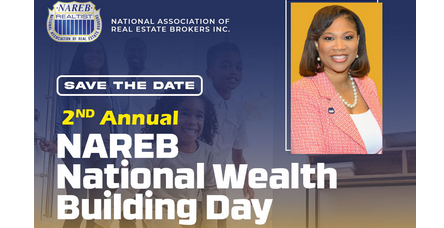[Workplace Diversity\Jack Whatley]
Jack Whatley: “The main idea of recruiting should be that it’s color-blind and gender-blind. A company with that core principle strengthens a worker’s sense of belonging, actively demonstrates great opportunity for all,…”
Photo: YouTube
In the post George Floyd\COVID-19 world, what will workplace diversity look like?
The worldwide protests against racism and police brutality have forced many people to think about sweeping, positive changes in society that will result in racial equality.
In the workplace, it’s well-documented that diversity and inclusion benefit both individuals and businesses, and that these factors are also important to job seekers.
As businesses reopen during the pandemic and millions of unemployed hit the job market, how companies attract the best candidates will be determined in part by how inclusion and diversity are emphasized during the recruiting process, says Jack Whatley (www.humancodeofhiring.com), a recruiting strategist who specializes in creating employer branding campaigns.
“Many job seekers today expect an inclusive, diverse workplace,” Whatley says. “The main idea of recruiting should be that it’s color-blind and gender-blind. A company with that core principle strengthens a worker’s sense of belonging, actively demonstrates great opportunity for all, and signals a strong company that sincerely desires to hire the best people, regardless of race or gender.
“It needs to be a message companies share with job candidates – specifically how they are inclusive in their culture, the ways they value diversity, and how they operate their company through these and all of their values on a daily basis.”
Whatley offers these suggestions for businesses that want to bring more diversity and inclusion into the recruiting process:
- Choose words carefully, precisely in job descriptions. Unconsciously, some companies may indicate gender bias in the way they describe posted jobs. One study shows that men will apply for a job if they meet only 60% of the listed criteria, but women will apply only if they meet 100%. “Review your job advertisements and scrutinize how they are worded,” Whatley says. “Strong or aggressive words such as ‘enforcement’ or ‘exhaustive,’ for example, might draw a higher proportion of men applying for roles when many women are just as qualified, or better qualified, for the position.”
- Widen the net with a diverse outbound strategy. Identify communities to reach for job opportunities and expand the geography of the talent search to find underrepresented communities. “Companies have to go the extra mile and cast a wide net,” Whatley says. “Posting on community boards, reaching out to meetup groups and industry-specific job networks are ways to reach people who otherwise may not have known about it.”
- Screen in, don’t screen out. Many companies, in the interest of efficiency, may overlook highly qualified candidates by using a quick screen-out formula, which Whatley notes often entails a brisk, biased sifting through of resumes. “A candidate doesn’t need to check all the boxes at the first glance of their resume,” Whatley says. “In fact, companies sometimes make those boxes too specific and don’t see how a candidate’s other strengths and overall experience more than compensate. You might find that leaving out some of the check-box requirements opens doors for different and highly qualified applicants.”
- Involve the team. Whatley says interviewers should focus on skills rather than commonalities that could cause bias. “Hiring managers are more likely to view candidates who are culturally similar to them as a better fit for the job they’re trying to fill,” Whatley says. “But that limits your recruitment process, so include a team of people at each stage of the process. You’ll get more opinions on each candidate and thus be sure you’re hiring the right person.” “The recruiting process can set the right tone for a company to maintain standards of diversity and inclusion,” Whatley says. “They are better able to win top talent and improve overall customer satisfaction and employee satisfaction.”
About Jack Whatley
Jack Whatley (www.humancodeofhiring.com) is a recruiting strategist who specializes in creating employer branding campaigns that position companies as the employer of choice in their market. He is the author of the upcoming book Human Code of Hiring: DNA of Recruitment Marketing. Whatley is known for creating successful recruiting and employer branding campaigns and delivering highly qualified applicants. His Driver DNA Hiring System has made Whatley the No. 1 people ops recruiting strategist for truck driving recruitment in the world. Together with his partner, daughter and innovation wizard Anika Whatley, they have expanded into other industries and have been working to perfect the Human Code DNA Hiring System, which uses the latest technology to improve the quality of worker life and enhance recruiter productivity.












